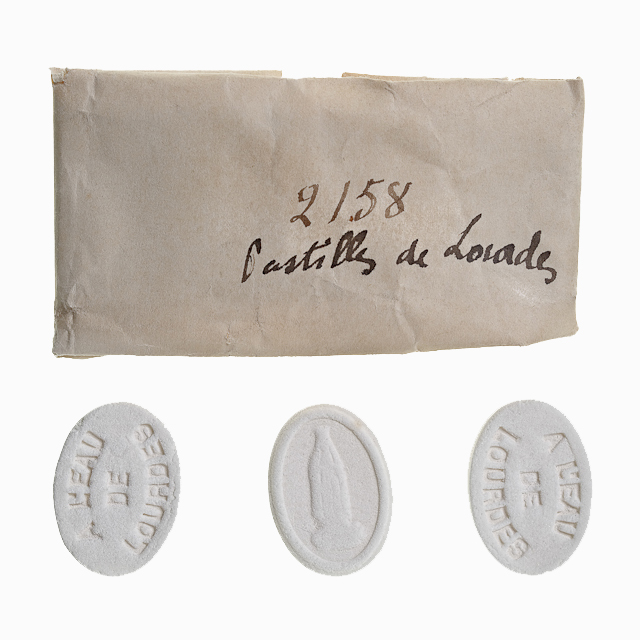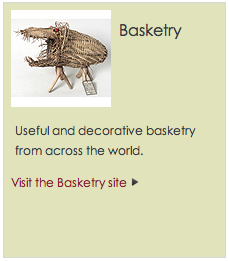Lourdes Pastilles, France

Transferred from the Wellcome Institute in 1985; 1985.52.1084
Nestled in the foothills of the Pyrenees, the town of Lourdes is one of the most famous pilgrimage sites in the Christian world. Lourdes became famous in 1858 after a local girl named Bernadette Soubirous claimed the Virgin Mary had appeared to her eighteen times at the Grotto of Massabieille, where she had gone to fetch some firewood. During one of these apparitions the Virgin Mary instructed Bernadette to drink and wash at the spring. Bernadette could not see a spring, but she dug in the muddy ground and found the source, which soon formed into a pool of water. As news of the apparitions spread pilgrims began to visit the grotto, and the spring became renowned for its curative powers.
In 1873 the Church made Lourdes a national pilgrimage site, and the town quickly developed into a modern tourist city. Alongside traditional religious objects such as rosaries, statues and medals, shops began to sell new kinds of devotional objects and bottled water from the spring. Amongst this array of Lourdes souvenirs were Pastilles de Lourdes, white oval lozenges made from sugar and spring water. The pastilles, which were imprinted with a figure of the Virgin Mary on one side and ‘A L’EAU DE LOURDES’ (‘contains Lourdes water’) on the other, were manufactured at a nearby factory by F. Valette & Company and sold in tins decorated with images of the spring and the figure of the Virgin. According to a promotional leaflet, one single drop of water contained in a pastille was ‘powerful enough to cure both suffering body and soul’.






